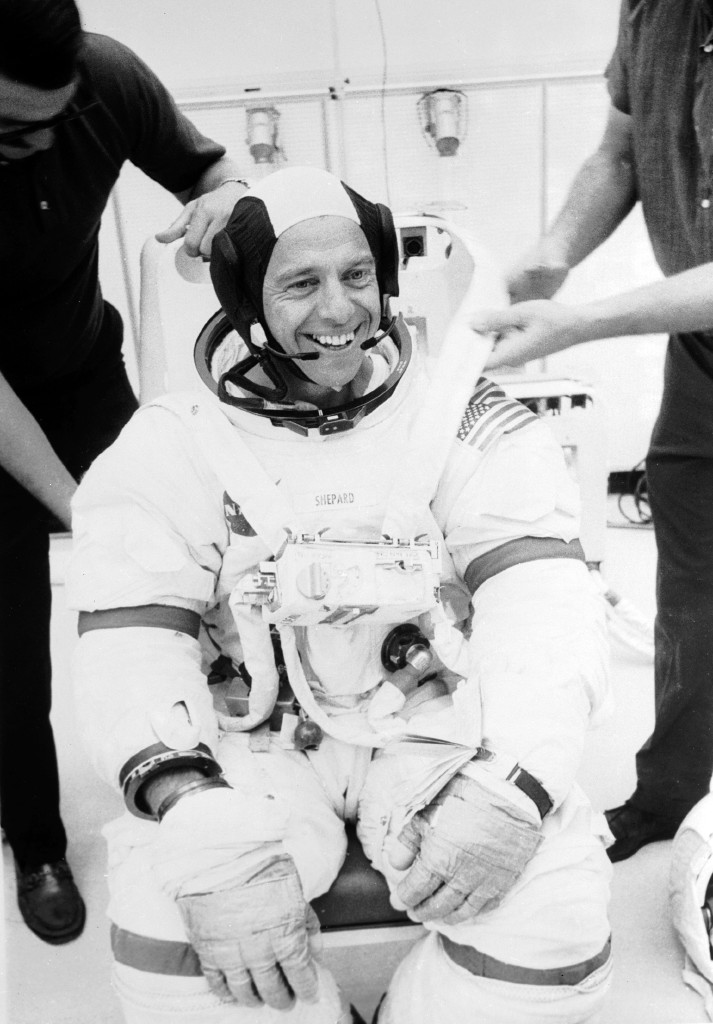Buckle Up For The Space Age.
By David Cohea, ReMIND Magazine
In 1961, America launched into the Space Age.
Officially, the Space Age began in 1957 with the launch of Sputnik 1 by the Soviets, but none of that seemed real until a flesh and blood American got up there.
That happened not on April 12, 1961, when Soviet Yuri Gagarin launched aboard Vostok 1, but a month later on May 5, when Alan Shepard roared into suborbital space on Freedom 7 for a 15-minute flight to an altitude of 116 miles. We had barely pierced the envelope of space, but there was a sense we were headed for the stars.
On May 25, new President John F. Kennedy announced that the United States was shooting for the moon — literally: “I believe that this nation should commit itself to achieving the goal, before this decade is out, of landing a man on the moon and returning him safely to Earth. No single space project … will be more exciting, or more impressive to mankind, or more important … and none will be so difficult or expensive to accomplish.”
Finally, reality was catching up to the movies. The U.S. space program went into high gear as bigger and bolder rockets launched almost every month from Cape Canaveral in Project Mercury and then the Gemini and Apollo space programs. In 1968, people were working on the moon in Stanley Kubrick’s movie 2001: A Space Odyssey. The next year, Neil Armstrong would be leap-walking there.
Thanks to savvy marketing by Madison Avenue’s Mad Men, American consumers in the ’50s became enrapt with the dream of progress. The internet was 30 years away from connecting the digital universe, but that didn’t mean there wasn’t much that was new in 1961. Practically everything was — from color TVs to rock ‘n’ roll, interstate highways to steel-and-glass high-rises, to shopping malls and credit cards and cordless power drills and kitchen appliances. It was Suburbia Plus, and the American imagination in ’61 was unlimited in its horizon of upper-middle-class possibility (as seen in magazines and on TV).
Syd Mead worked for Ford’s Advanced Styling Studio in the early ’60s. His Ford Gyron was a futuristic two-wheeled gyrocar first shown at the 1961 Detroit Motor Show. Mead went on to become an illustrator for clients like United States Steel and Philips Electronics. The future roared to life in his sleekly imagined conveyances and conveniences. Charles Schridde was hired that year by Motorola to create a series of ads featuring futuristic houses with the Illinois company’s TVs. The company had just released the first transistorized remote control for TV, and they wanted to promote their luxury sets for the automated suburban lifestyle. The ads were wildly popular, and Motorola loved the product placement in everyone’s favorite future.
Everywhere you looked, America was taking off. Cars grew space-age fins and missile-shaped bumpers. Mid-century modern home design offered angular furniture and atomic-age lamps. Sci-fi magazines offered visions of star travel in spaceships designed like shopping malls. Urban designers imagined smooth traffic flows and controlled environments.
Office automation was taking over the workplace — or so said the marketers of business machines. For modern employers there were phone answering machines, electronic calculators, dictation machines and photocopiers. Heady stuff if you were in business, although workers were anxious about robots occupying their desks.
It wouldn’t come out for another year, but Hanna-Barbera was working on a primetime cartoon series to pair with its dino-comedy The Flintstones. About a Space-Age family, The Jetsons would prove remarkably prescient about things common today, like video phones, flat-screen TVs, robots and push-button food.
The year had its sci-fi movies, from Cold War chillers like Battle of the Worlds to the atomic spawnfests Mothra and Gorgo. But as if to pump the brakes on America’s rockets-to-the-moon fantasy, the hit of the year was a black-and-white Disney film titled The Absent-Minded Professor, with Fred MacMurray starring as a chemistry professor who stumbles onto the formula for flying rubber – Flubber – and uses it to fly about in a Model T. Whatever Space Age enthusiasms ruled Madison Avenue, a slower and more sedate future still held sway with the rest of us.
Perhaps by 1961 the future was already coming at us too fast.

